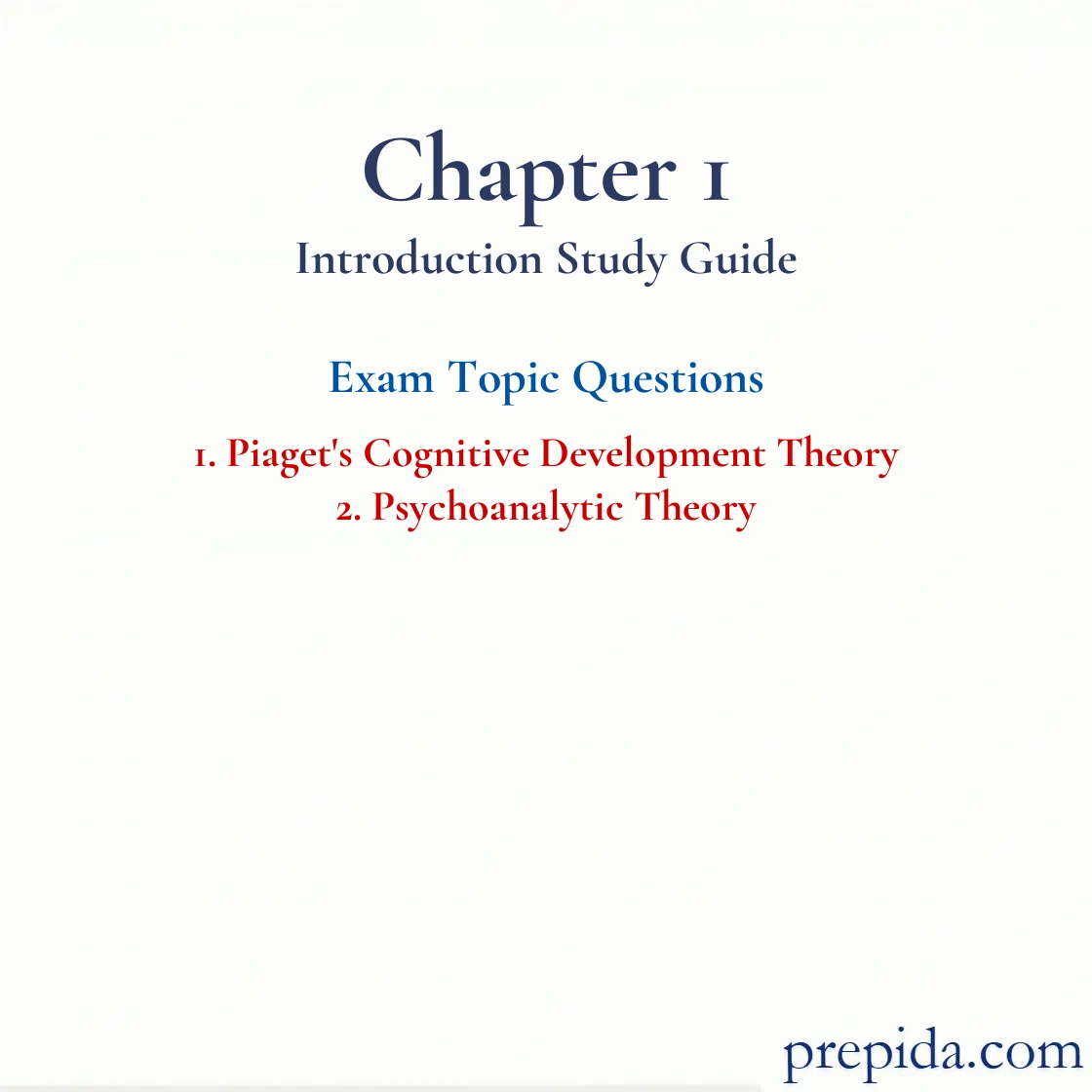
Sandrine is now able to use abstract thought as well as logic; Piaget would argue that she is in the ________ stage of development.
- preoperational
- concrete operational
- formal operational
- conceptual operational
Operations: In Piaget’s theory, these are reversible mental actions that allow children to do mentally what they formerly did physically.
Hidalgo, eight, is very good at addition and subtraction, but he has a hard time understanding the complex algebraic problems that his 14-year-old sister does. Hidalgo is currently in which of Jean Piaget's stages of development?
- preoperational
- concrete operational
- formal operational
- conceptual operational
Preoperational Stage: Piaget’s second stage, lasting from about 2 to 7 years of age, during which children begin to represent the world with words, images, and drawings, and symbolic thought goes beyond simple connections of sensory information and physical action; stable concepts are formed, mental reasoning emerges, egocentrism is present, and magical beliefs are constructed.
Piaget's four stages of cognitive development
- start at conception and continue until adulthood.
- start at birth and end at death.
- span from conception to death.
- start at birth and continue through adulthood.
Life Span: The maximum number of years an individual can live. The life span of human beings is about 120 to 125 years of age.
According to Jean Piaget's cognitive developmental theory, which of the following is true of the sensorimotor stage?
- It is the second stage of cognitive development.
- It lasts from birth to about 2 years of age.
- It is the longest stage of cognitive development.
- It involves developing images of ideal circumstances.
Sensorimotor Stage: The first of Piaget’s stages, which lasts from birth to about 2 years of age; infants construct an understanding of the world by coordinating sensory experiences with motoric actions.
According to Piaget's theory, two processes underlie children's cognitive construction of the world
- assimilation and generalization.
- adaptation and abstraction.
- association and abstraction.
- organization and adaptation.
Piaget’s Theory: Theory stating that children actively construct their understanding of the world and go through four stages of cognitive development.
Dr. Wong is a cognitive developmental theorist, so we know that he will stress the importance of ________ in understanding development.
- conscious thoughts
- repressed memories
- biological processes
- the effects of genes and evolution on the development of intelligence
Self-Conscious Emotions: Emotions that require self-awareness, especially consciousness and a sense of “me”; examples include jealousy, empathy, and embarrassment.
Lynne, five, loves to draw and color. She represents the world with words and her drawings. According to Piaget's cognitive development theory, Lynne is in the ________ stage of cognitive development.
- preoperational
- sensorimotor
- formal operational
- concrete operational
Preoperational Stage: Piaget’s second stage, lasting from about 2 to 7 years of age, during which children begin to represent the world with words, images, and drawings, and symbolic thought goes beyond simple connections of sensory information and physical action; stable concepts are formed, mental reasoning emerges, egocentrism is present, and magical beliefs are constructed.
Psychoanalytic theories are criticized for
- not emphasizing sexual underpinnings.
- not emphasizing unconscious aspects of the mind.
- creating an image of people that is too negative.
- stressing the importance of cognitive thoughts.
Psychoanalytic Theories: Theories that describe development as primarily unconscious and heavily colored by emotion. Behavior is merely a surface characteristic, and the symbolic workings of the mind have to be analyzed to understand behavior. Early experiences with parents are emphasized.
Most contemporary psychoanalytic theorists believe that Sigmund Freud
- proposed a theory that has stood the test of time and needs no revisions.
- overemphasized sexual instincts
- overemphasized cultural experiences as determinants of an individual's development.
- underestimated the role of the unconscious mind in determining development.
Psychoanalytic Theories: Theories that describe development as primarily unconscious and heavily colored by emotion. Behavior is merely a surface characteristic, and the symbolic workings of the mind have to be analyzed to understand behavior. Early experiences with parents are emphasized.
Dr. Berenstein holds the view that behavior is merely a surface characteristic and that a true understanding of development requires analyzing the symbolic meanings of behavior and the deep inner workings of the mind. Dr. Berenstein can be described as a(n)
- psychoanalytic theorist.
- evolutionary theorist.
- cognitive theorist.
- behavioral theorist.
Psychoanalytic Theories: Theories that describe development as primarily unconscious and heavily colored by emotion. Behavior is merely a surface characteristic, and the symbolic workings of the mind have to be analyzed to understand behavior. Early experiences with parents are emphasized.
Identify the correct sequence of the five stages of psychosexual development described in Freud's theory of development.
- genital, oral, anal, phallic, and latency
- oral, anal, phallic, latency, and genital
- anal, genital, oral, phallic, and latency
- oral, phallic, anal, latency, and genital
Theory: An interrelated, coherent set of ideas that helps to explain phenomena and facilitate predictions.
________ theories describe development as primarily unconscious and heavily colored by emotion.
- Behavioral
- Social cognitive
- Evolutionary
- Psychoanalytic
According to Sigmund Freud, which of the following statements is true?
- Children's social interaction with more-skilled adults and peers is indispensable to their cognitive development.
- Children go through four stages of cognitive development as they actively construct their understanding of the world.
- The primary motivation for human behavior is social in nature.
- People's basic personality is shaped during the first 5 years of their life.